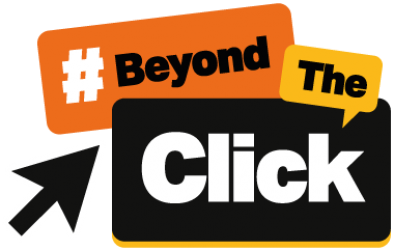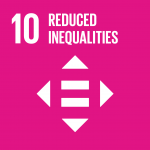3. The ability to constructively engage in digital communities
The Digital Literacy Framework Explored (with suggested activities and resources)
- Display the ability to be inclusive and to display empathy in group communications – how are we part of a community and what does this mean for empathy and why is it important? How do we transfer this into the digital environment
- Evaluate group communications for bias and hate – how to recognise and develop strategies for responding to hate and bias in a community
This section introduces different kinds of communities, digital communities and explores ‘speaking out’ in this context.
Case studies: #FossilFreeTCD; #IStandWithRekha
Activity 3.1 What is a community?
1. Discuss the question what is a community? What communities do we belong to? What are the things we need in a community to feel safe? Think about emotional safety as well as physical safety.
List the group’s ideas about what makes a person feel included or not. Ask members of your group to think of times that they have felt included in a group and times when they have felt left out. You can use these experiences to help them start thinking about what it means to include others. Now discuss times when the group members thought about someone else’s feelings, try to get them to reflect on what they need to do within themselves when considering another person’s feelings, as well as what it feels like to know that another person is doing this for them.
Then discuss this question, ‘What are some of the different ways iPads, computers and phones can help and harm a ‘feeling of community’?
Key questions:
- How can I be part of a community, be inclusive and show empathy?
- How can I identify and respond to hate and bias in digital communities?
- Why is this important?
Activity 3.2 What Are Digital Communities and what challenges do they pose?
1. Ask small groups to create a list of three to five unique challenges they think might come up when participating in general or online communities (e.g. it can be hard to communicate emotions or intent when you are not face to face; people might feel freer to say nasty or demeaning things when they are anonymous online etc.). Think then about some guidelines that might help them address such challenges. Then in the whole group, ask them to speculate about whether these challenges would be the same or different in a real-world environment.
2. Divide the group appropriately; give each smaller group one of the role-play situations included in the Digital community role-play scenarios handout.
- Handout 8: Digital community role-play scenarios (from Teaching Tolerance)
Ask them to discuss the role-play situation and then act out what they feel is the best solution to the problem. Then, bring the group together and invite them to share their role-play and the solutions they came up with. Leave time for discussion, and focus on the complexity of the situations.
3. Ask the group if they have ever experienced or witnessed language online that was biased or hateful? Who was it directed at? Did they do anything in response or not? Why? Ask them if they think people are more likely to use biased or hateful language online versus in real life? Why? Discuss the answers carefully.
4. Use the Step In, Step Out handout as described.
- Handout 9: Step in, Step out (adapted from Teaching Tolerance)
If individuals have experienced what is described in the statement, they should step into the circle silently and then step back to rejoin the original circle. The emphasis here is on doing this activity silently and reflectively and that there will be an opportunity to discuss it afterwards. Then discuss the activity and any reactions or questions it raised.
5. Brainstorm possible kinds of bias people might face online, list responses – examples could include hate speech; hate symbols; offensive name calling and/or cyberbullying related to identity e.g. religion, race, ethnicity, sexuality, gender, ability or immigration status); harmful threats; offensive jokes; or offensive images. What digital spaces might contain such bias and behaviour e.g. online video gaming, discussion forums, message boards, comment sections of articles, social media pages, email or blogs.
Then, in smaller groups, use some of these situations to create a poster recording their thoughts and responses to the following questions:
- What is the kind of bias being faced in your scenario?
- What safety concerns should you consider?
- What are different ways of responding to the scenario?
Finally, create a whole group list of the issues and strategies identified in their groups that might help people identify and respond to biased or hateful language online.
Some issues to consider:
- Think about safety concerns: is the person being biased or hateful a total stranger or a friend/person we know and with whom we can talk?
- Are there different ways of responding to the same situation?
- When might it be better to anonymously report an incident or involve others or an official authority versus responding individually?
- Think about ways we might support members of a (digital) community who have faced online harassment or cyberbullying.
Recommended reading:
- Think Before You Click thinkb4uclick.ie, designed for teachers of Junior Certificate CSPE who wish to explore the issue of online privacy in the context of online rights and responsibilities. Jointly published by the Irish Council for Civil Liberties and the National Centre for Technology in Education
- The No Hate Speech Movement in Ireland provide a rich platform for action. In particular, check out the 4 skills to challenge hate speech online (1. report hate speech; 2. challenge hate speech; 3. defend and promote human rights; 4. disagree with respect): nohatespeech.ie/act
- Consider the iReport.ie Racist Incident Reporting System which allows the people, communities, and organisations of Ireland to confidentially report racism nationwide
6 guidelines worth reviewing on digital communities and online safety
- Screenagers: Guidance for Digital Youth Work (2016) by the National Youth Council of Ireland. For more visit youth.ie/Screenagers
- Social Media and Youth Engagement Guidelines (2017) by Youth Work Ireland
- Internet Safety: Acceptable Use Policy template for post primary schools (2012) National Centre for Technology inEducation (NCTE)
- Get with it! Understanding and identifying cyberbullying to help protect your children (2017) by Office for Internet Safety. See more guides from the OIS: internetsafety.ie/en/is/pages/oisbooklets
- Social and Digital Media Policy and Guidance for HSE Employees (2015) by the Health Service Executive (HSE)
- GAA Social Media Policies and Guidelines (2015) by the Gaelic Athletic Association
Activity 3.3 The challenge of hate speech and discrimination – practicing in digital communities
Key Questions
- Why is it important for people to practice inclusivity and respect when communicating with each other?
- Does online communication affect life offline? How?
- What responsibility do people have for their online communications?
1. Ask the group to think about how they would like to be treated when others speak to them (think: respect, eye contact, non-threatening body language, inclusivity and politeness). Discuss answers to the question ‘People respect me when they…’
Discuss the responses, emphasising the importance of being empathetic. Does speaking positively to or about someone have more impact when said in person or online. What about speaking negatively to or about someone? Why?
Ask the group how they feel when they witness, experience or see hate speech or negative comments or posts.
- How does what’s said online affect people’s lives offline?
- What actions, if any, do they take when they or their friends receive hate speech or negative comments online?
2. List the following scenarios on a flipchart or board and then review them together:
- A person you don’t know is being bullied online through social media posts; some others in a digital community are questioning his/her gender. Some of your friends are the worst offenders.
- A photograph and story of you in an embarrassing circumstance has been posted online and portrayed as a real news story.
- Some students you don’t know are spreading a nasty story about you on social media. Your friends think it is true and begin to ignore you.
Label four corners clearly with the titles ‘do nothing’, ‘respond’, ‘report’ and ‘something else’. On each label, write, ‘Explain’ below the heading.
Then review each scenario again and after each one is read, ask individuals to move to the corner that best describes how they would react. Then ask them to explain their reasons. Do they think their action would escalate the situation further or de-escalate it?
Discuss the following:
- Why are positive comments important to you? How do they affect your life?
- When people are experiencing some difficulty—such as arguments, friendship breakups, false accusations or harassment – why is it better not to make negative comments?
- What responsibility do you have for your online communication?
- How can you help to take this responsibility seriously?
3. Initiate a discussion on speaking out and movements to tackle hate speech
Lead a discussion on ‘community standards’ online, inviting the group to map out strengths and weaknesses to standards across social media platforms today such as Facebook, Twitter, YouTube and Snapchat. In pairs, introduce the word ‘incitement’ in this context. What can individuals do, despite the limitations to changing community standards and where do they fit in with regards to challenging bias and hate-speech? Record feedback and share with the group (actions can include ‘reporting’, speaking out, challenging bias with evidence and reliable sources etc.)
Invite the group to work in pairs / small groups and pick an example from the No Hate Speech Movement case studies in the WE CAN! resource. Review and present what was done and what the group can learn from it.
Key background resource: We CAN! Taking action against hate speech through counter and alternative narratives by the No Hate Speech Movement and Council of Europe (with downloadable hand-outs). Presents communicative and educational approaches and tools for youth and other human rights activists to develop their own counter and alternative narratives to hate speech.
Keywords
It might also be useful at some stage in the process to discuss some of the keywords associated with these issues and whether we effectively understand them.
- community – a group of people who share something in common or the feeling of fellowship that can develop among a group of people
- digital community – communities that develop on the internet
- inclusivity – intentionally working to ensure that all people experience a sense of belonging, especially those who might otherwise be left out or marginalized
- empathy – the ability to understand other people’s feelings and sometimes feel alongside them
- hate speech – speech that attacks, threatens or insults a person or group on the basis of national origin, ethnicity, color, religion, gender, gender identity, sexual orientation or disability





